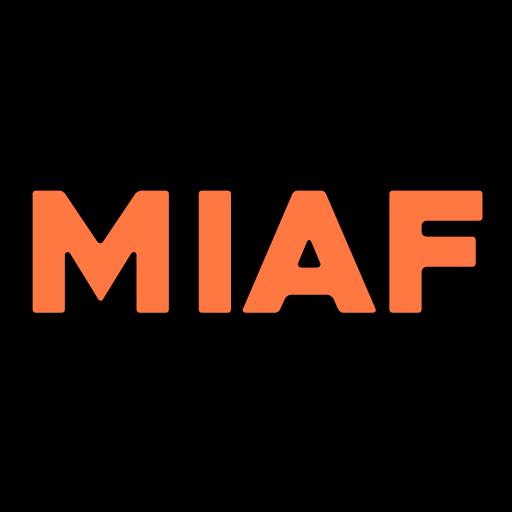What follows is an extended introduction to LIAF 2016’s International Competition Programme 6: Below the Surface. Find out more here.
Surfaces. The concept is one of the simplest to grasp and one of the first learned by new-borns. We stand on a footpath, our dinner sits on top of a table, a movie is projected onto a screen, a large sheet of glass stops (most of) us from simply climbing into a jewellery shop and helping ourselves. Breaching a surface to find out what lies beneath normally takes implements, effort and a certain will driven by a specific reason. Breaching a surface by accident often brings inconvenience, confusion or pain. Crashing into a surface can bring death. And like other elemental parts of our lived experience that we cannot readily see or gain access too, surfaces provoke the creation of myths about what they might be concealing.
Our relationship with surfaces is so fundamentally simple and so universally understood that we seldom stop to notice it. We live by their rules. Surfaces exist, define and regulate our lives in the same way as the air we breathe and the rich blanket of microbes we have reached an uneasy, fragile truce with over the generations.
Live-action filmmakers understand surfaces extremely well. Surfaces can reflect or absorb light, they can define boundaries, or act as backdrops. But generally they have to play by the rules – surfaces are surfaces and they need to behave as such to be taken seriously.
Well… welcome to the world of animation! Those rules and assumptions need not, and often do not apply. Animation is an art form gifted us as the ultimate tool for delving into places of which only an ample and amplified imagination can conceive. Animation renders those rules not so much petulantly invalid as delightfully defunct. Anything can be anything and once it is anything it can go anywhere. In this version of a journey, surfaces are not barriers, end-games or platforms, they are simply one element of a fluidly interpretive cinematic mise-en-scene.
We open this programme with Exhibit A, Ghost Cell by Antoine Delacharlery, yet another stunning example of extraordinary animation to emerge from Autour de Minuit in Paris. Ghost Cell could best be described as a sensory journey INTO surfaces. The astonishing digital detail in which all the imagery of this film is etched is so absorbing that we can overlook the fact that really nothing in the frame has a surface. The skin – the surface – of virtually everything depicted has been dissolved away exposing a man-made organism of staggering, virtually biological complexity. One of the many delights in experiencing this film is to realise how quickly and easily we have abandoned our intellectual adherence to the rules and how readily and fully we adopt the alternative paradigm that gives Ghost Cell so much of its power.
We have been watching the films of David Buob grow bigger, more epic and stranger for the last few years. The House (2011) was a sweet, endearingly odd tale about a little girl apparently stuck in a dream. It was definitely an audience favourite and achieved remarkable success on the international festival circuit. And it gave little hint to what would follow it. Uto (2014) was a different creation altogether. Almost surreal visually, it took the audience on a churning carnival ride, twisting and turning without let up. Buob’s latest, Me By You, is more of the same – a LOT more of the same. It virtually spasms with a kind of unrestrained energy driving it relentlessly down and down and down some more. This seems to be Buob’s emerging style.
David Delafuente is an interdisciplinary artist with interests in the moving image, aesthetic theory, and graphic design. He recently graduated from the Rhode Island School of Design’s Film, Animation, Video programme and now lives just down the road from his old school in New York City. He is one of more dynamic and experimental young animators in the United States. Delafuente’s student film UUUUUU made an immediate impression. Stylish and elegant, it harnesses many of the unique properties of animation to create a film with a ‘personality’ that reveals the majority of its message through what it hides and suggests. “This film is sort of a breakup film,” explains Delafuente. “I made it following the dissolution of a relationship that I really cared about. I didn’t see colour in my work during this time; it was a reflection of my thoughts at 3:00am which were dark and nocturnal.”

Much of this slow-reveal show-and-tell is achieved through an intricately woven interlacing of black and white design and the clever use of surfaces to obscure or expose the film’s more subtle messages. And – for the record – it was all hand-drawn onto paper; it took more than 4,000 drawings to produce this engagingly moody and intriguing film.
Mr Sand by Soetkin Verstegen muscularly veers this programme off on a sudden aesthetic course change. Raw, stylistically diverse and possessed of a generously proportioned narrative ambition this film operates on multiple levels. At heart it is a lavish, uncompromising ‘meta-cinema’ visual essay. In its DNA resides twisting strands of clues illuminating the very nature of early cinema and the social and cultural relationship early audiences collectively built with this new medium as they tried to fathom its uses and potentials. Scattered throughout this unmapped obstacle course are random and often potent reminders of what pieces of complex cinematic animation look like and what goes into making them. A recurrent thread intermittently reminds us that fire was a consistent risk that sat in a tense affiliation with the reality of using flammable nitrate filmstock to entertain hundreds of people in dark, enclosed rooms. This is a film to be absorbed and experienced rather than critiqued in any linear fashion. Crammed to bursting with images, ideas and challenges, it none-the-less wastes not a single frame.
Mr Sand (Soetkin Verstegen)
And perhaps of interest to quiet connoisseurs of animated film detail, the sound on Mr Sand was done by Andrea Martignoni, a name that has been cropping up on more and more of the films we screen in recent years. The self-described unofficial ambassador of Italian animation, Martignoni’s skill, creativity and expertise in creating soundtracks for auteur animation is something that spans back some time. The regularity with which we are seeing his name strapped into the credit roll of more and more of these films those is worth pointing out. Great soundtracks do not happen by accident.

The programme concludes with what must surely be one of the most charming films in the entire LIAF competition line-up. Once Upon A Line by Alicja Jasina is a sweet conveyor belt treat for the eyes – the exact way we feel like sending you out into the night. As the title insinuates, much of film relies on an ability to wrangle the humble line into a rollicking conconction of images with a flow and oscillating narrative of sorts. The almost super-human imaginative complexity involved in creating this film is shyly masked by the apparently simple and clean lines of the finished product. It is an act of creative gymnastics only the fittest of the form would set out to execute. Try it – if you don’t tie yourself in knots, send in the results, we might screen them next year.
Malcolm Turner, MIAF Director
















